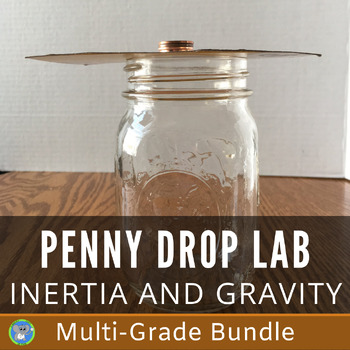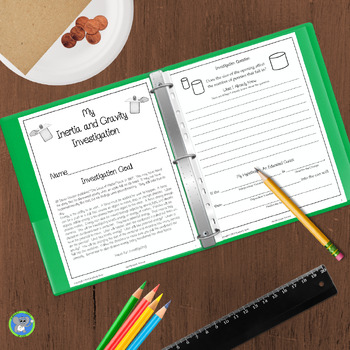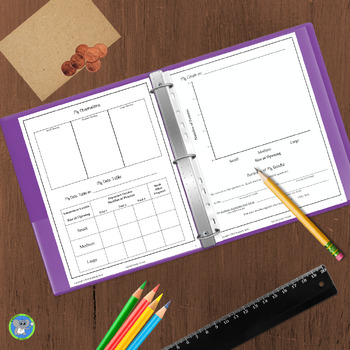Inertia And Gravity Experiment Bundle | Force and Motion Science
- Zip
- Easel Activity
Products in this Bundle (3)
Description
Explore forces and motion in this hands-on experiment bundle. Three-grade level versions with 20% savings. Teachers will love its' ease of use, simple materials, and meeting the science and engineering practices. Students will love uncovering the science of inertia, gravity, and The Laws of Motion.
This download contains K-1st, 2nd-3rd, and 4th-5th grade. Each version is differentiated for abilities and the Next Generation Science Standards. The K/1st grade version tests the difference between a push and a pull. It contains checkboxes and coloring. The 2nd/3rd-grade journal investigates if the size of the container affects the number of pennies that fall in. The 4th/5th-grade journal expands the number of trials and uses more pennies. All follow the scientific method for their age level. If your students are new to the scientific method, we recommend starting with the lower age level.
Supplies for the Investigation
Different-sized containers, pennies, scissors, cardboard, ruler
Click the link to check each investigation included.
Push and Pull Experiment: Inertia and Gravity with Kindergarten and First Grade
Inertia and Gravity Lab: Investigate the Laws of Motion with 2nd/3rd Grade
Inertia and Gravity Lab: Investigate the Laws of Motion with 4th and 5th Grade
By purchasing this bundle, you are SAVING 20% off each individual resource.
Also corresponds with
Inertia Exploration Task Cards: Discover the 1st Law of Motion
Digital and Distance Learning Approved. This is a great way to get students to use the scientific method at home. The only supplies needed are a container, cardboard, and pennies. The supplies can easily be modified. The file is a PDF but comes with a pre-created Easel by TpT overlay. We added text boxes and tips for completing it online. Click "Open in Easel" on each product page to get started. They can be added to your Google Classroom as an assignment. Students can also print and complete it. A science lab teacher can also assign all the grade levels, allowing families to conduct the experiment together. You can send the overlay as a link to Google accounts if you don't have Google Classroom. If that is not possible, use the PDF in a program like Kami extension to create an online version with text boxes. We already did it for you in Easel. You could conduct the experiment as a demo for the students, and then they try it. Get creative!
Great for homeschool, classrooms, scouts, end-of-year activities, science fairs, and more!
You might also like
- A Year Of Investigating with 2nd and 3rd Grade: 8 Bundle Pack
- Valentine Candy Heart Science: K-5th Grade Bundle On Sinking And Floating
- Butter Science And STEM Challenge: Butter Experiment For 2nd/3rd Grade
Remember leaving feedback earns you points toward FREE TPT purchases. We love hearing how the investigation went.
Also, follow us and be notified when new explorations are uploaded and deals.
Please contact us with any questions! We are here to help.
Yours in Science,
Kimberly Scott
Inspiring Lifelong Learners through a Memorable Scientific Experience.
All parts are copyrighted. Please see the terms of use in the download.





